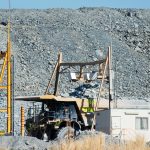Special economic zones

A Special Economic Zone (SEZ) is a defined area within a country that is subject to different laws and regulations than other areas of the country. These comprehensive industrial areas provide preferential incentives to investors and offer government import-export administrative support to facilitate trade. Though ...
Health care policy and administration
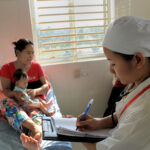
A quality and effective healthcare system that provides equal access to services is critical to ensure the well-being of any population. Both developed and developing countries strive to bring improvements to their healthcare systems. Cambodia, in particular, has undergone significant transformations in terms of healthcare ...
Court monitoring
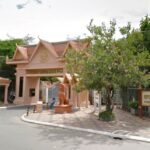
Respect for strong values is the key to citizens’ trust in their courts.31 The international values recognized for judges are independence and impartiality, integrity, equality of treatment, diligence and competence. A judge cannot both decide a case and have a personal interest in its resolution. ...
Development policies and administration
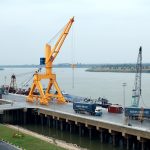
Products from Vietnam arrive at the Phnom Penh Autonomous Port in Kandal province. Photo by World Bank Photo Collection, taken on 23 February 2013. Licensed under CC BY-NC-ND 2.0The Comprehensive Cambodian Peace Agreement, commonly referred to as the Paris Agreement, is seen as the beginning ...
Ministries and other national bodies
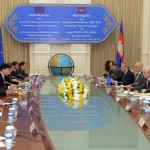
Nearly all of the ministries were established in 1995. A few ministries were only recently created in the post-2013 national election by a separation of one ministry into two. There are 28 government ministries and secretariats, and many national bodies. ...
Extractive industries
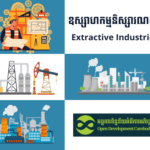
Extractive industries include mining and mineral sectors, natural gas and oil exploration, petroleum refineries, and quarrying for construction resources such as sand, stone, and gravel. Cambodia’s extractive resources have gone largely untapped, while these resources are geographically identifiable. French and Chinese geologists have been indicated ...
Budget
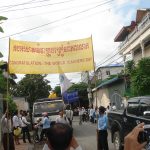
Cambodian Independent Teachers’ Association and Free Trade Union of Workers of the Kingdom of Cambodia celebrated the World Teacher Day from Cambodia. Photo by Education International, taken on 5 October 2009. Licensed under CC BY-NC 2.0Cambodia’s national budget determines state expenditures and revenues. It is ...
Fisheries production
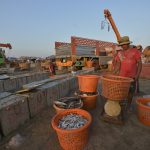
Local workers loading fresh catch to be transported to the city market at Chhnoc Trou pier, Kampong Chhnang province, Cambodia. Photo by Sylyvann Borei/World Fish, taken on 7 April 2014. Licensed under CC BY-NC-ND 2.0.Cambodia has abundant and productive fisheries. Fish is a traditional staple in the Cambodian ...
Investment policy and regulations
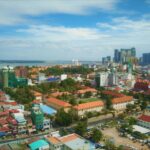
Cambodia’s economy has experienced an impressive performance, reflected in its rapid economic growth and significant poverty reduction. Part of this is the result of the relative openness of Cambodia towards foreign investors. Domestic investment has also been growing, although at a lower rate than other ...
National government
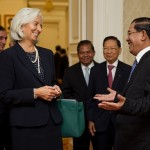
Cambodia is a constitutional monarchy. According to the 1993 Constitution, although he is the head of state, the king has very limited powers compared to the prime minister, the head of the government. Unlike the 1947 Constitution, power does not come from the king but ...
Protected areas
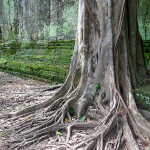
As Cambodia emerged from years of conflict, pressures grew on natural resources and sensitive areas. In response, a number of protected areas were created by royal decree in 1993 to protect ecologically and culturally important places. More detailed guidelines on managing the country’s protected areas ...
Cooking fuel
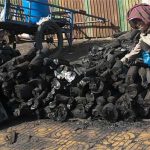
Firewood and charcoal are the main sources of energy for households and many small and medium enterprises, such as brick and tile industries. The cooking fuels used in Cambodia have changed greatly in the last decade. The National Census 2008 showed that 91 percent of ...
SDG 14 Life below water

Sustainable Development Goal 14 is primarily about the interactions of humans with the oceans. Specifically, it aims to conserve and manage the use of oceans, seas and marine resources for sustainable development.261 A UN General Assembly call for action has been used to clearly articulate ...
Ministry of Commerce

In 1996, the Ministry of Commerce (MoC) was established by law. Its organization and functioning is defined by a sub-decree of the Royal Government of Cambodia. After a nomination of the Prime Minister’s candidate and the vote of confidence on the cabinet by the National ...
Disasters and emergency response
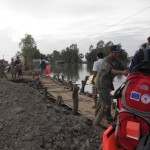
Cambodia flood, 2011. Photo by European Commission, taken on 11 October 2011. Licensed under CC BY 2.0Storms, flooding and lightning strikes are the major causes of death and property damage from natural disasters in Cambodia, while drought causes severe hardship, especially for farmers. In a ...
Taxation
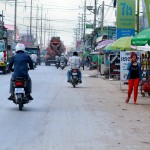
Heavy trucks on a street in Phnom Penh, Cambodia. Photo by Phalinn Ool, taken on June 15 2015. Licensed under CC BY-NC-ND 2.0The Cambodian government’s 2014–18 Revenue Mobilization Strategy aimed to enhance revenue administration and strongly increase the collection of taxes and other revenue. The ...
Oil refineries
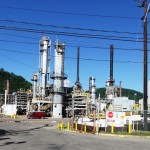
There is currently no oils refinery in Cambodia. Although a refinery has been planned, its construction has been delayed several times, reportedly over financing difficulties. ...
SDG 6 Clean water and sanitation
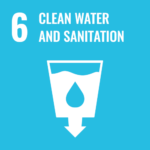
Sustainable Development Goal 6 has 8 targets and 11 indicators, which will be used to drive action towards achieving universal access to safely managed water and sanitation and appropriate management of water resources.414 SDG 6 recognizes that sustainably managing water goes beyond providing a safe water ...
Types of state-protected areas
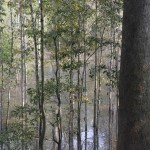
Flooded forest in Cambodia. Photo by Andrea Kirkby, taken 11 May 2014. Licensed under CC BY-NC 2.0.A 1993 royal decree designated 23 protected areas covering about 3,273,300 ha, equal to around 18% of the country’s total land area, and brought them under the jurisdiction of the Ministry ...


